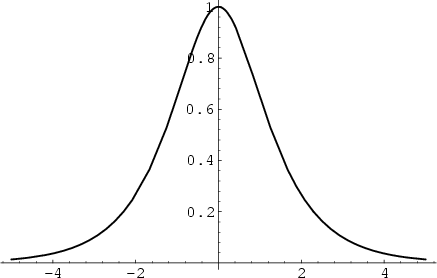|
|
|


The hyperbolic secant is defined as
See also Benson's Formula, Catenary, Catenoid, Euler Number, Hyperbolic Cosine, Oblate Spheroidal Coordinates, Pseudosphere, Secant, Surface of Revolution, Tractrix, Tractroid
References
Abramowitz, M. and Stegun, C. A. (Eds.). ``Hyperbolic Functions.'' §4.5 in
Handbook of Mathematical Functions with Formulas, Graphs, and Mathematical Tables, 9th printing.
New York: Dover, pp. 83-86, 1972.
Spanier, J. and Oldham, K. B. ``The Hyperbolic Secant
![]() and Cosecant
and Cosecant
![]() Functions.''
Ch. 29 in An Atlas of Functions. Washington, DC: Hemisphere, pp. 273-278, 1987.
Functions.''
Ch. 29 in An Atlas of Functions. Washington, DC: Hemisphere, pp. 273-278, 1987.